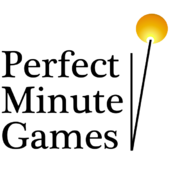Quote:Original post by liquiddark
Quote:Original post by Timkin
As to what happens when the line is vertical, you have an infinite vertical change divided by a zero horizontal change, which gives an infinite gradient (which can be confirmed by checking that the tan(pi) = infinity.
Or, more accurately, tan(theta approaches pi) approaches plus or minus infinity, since it goes to different places depending on which way you're coming from.
Not really. There are several types of infinity. For real numbers, there are two options: you can add two points "-infinity" and "+infinity", or you can add a single point "infinity" which is reachable from both ends. The first construction is common in Analysis (a.k.a. Calculus) when talking about limits. The second construction is the one used in Projective Geometry, which is the appropriate framework to describe the slope of a line.
The slope of a line should be an element of the 1-D real projective space, instead of a real number. The difference is only that the 1-D real projective space has a valid representation for vertical lines.
Saying that "tan(pi) = infinity" makes perfect sense to me, because we can see tan as a function that takes a real number and returns an element of the 1-D real projective space.
In case it is not clear by now, I like Geometry better than I like analysis. :)




